When it comes to providing a safe and comfortable space for our large canine friends, choosing the right dog crate is paramount. This comprehensive guide delves into the critical aspects of dog crates for large dogs, ensuring you make an informed decision that benefits both you and your pet. From understanding the importance of size and material to exploring the latest advancements in crate design, we cover the five key areas you need to consider.
Table of Contents:
– The importance of size and space
– Selecting the right material
– Safety features to look for
– Ease of cleaning and maintenance
– The role of portability and assembly
The importance of size and space
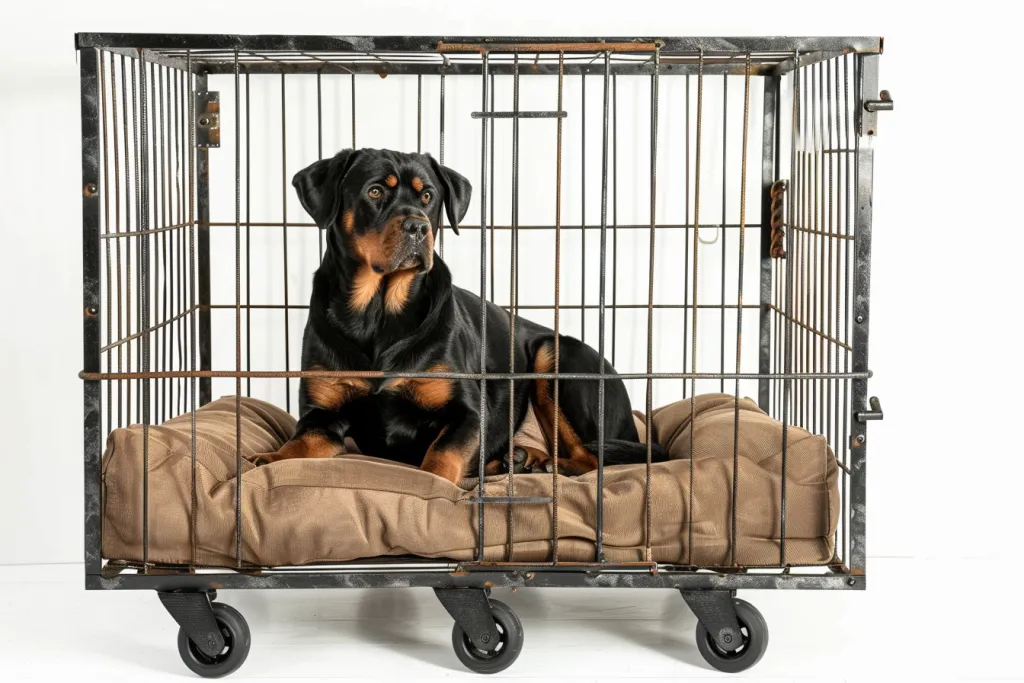
When selecting a dog crate, size is the first and foremost consideration. A crate too small can be uncomfortable and anxiety-inducing for your dog, while one too large may not provide the sense of security dogs instinctively seek. For large dogs, it’s crucial to choose a crate that allows them to stand, turn around, and lie down comfortably. This section explores how to accurately measure your dog and translate those measurements into the ideal crate dimensions.
Furthermore, the crate’s internal layout can significantly impact your dog’s comfort. Some crates come with dividers that allow you to adjust the space as your dog grows, especially useful for puppy owners. Understanding the balance between ample space and the cozy den-like feel can make a substantial difference in how your dog perceives their crate.
Lastly, we’ll look into how the placement of the crate within your home can affect your dog’s well-being. The crate should be in a quiet yet socially integrated area, allowing your dog to feel part of the family without being overwhelmed by noise and activity.
Selecting the right material
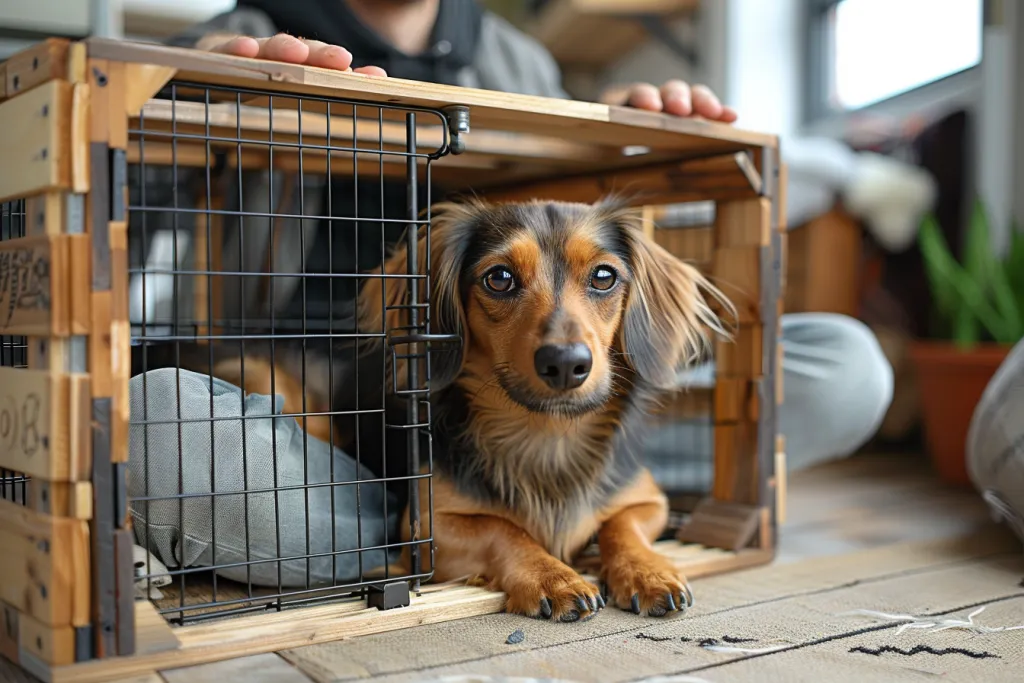
The material of a dog crate not only dictates its durability and longevity but also its suitability for different types of dogs and their needs. Metal crates are popular for their strength and ventilation, making them an excellent choice for dogs with a tendency to chew or for those living in warmer climates. However, they can be heavy and less portable.
Plastic crates offer a cozier environment and are generally more portable, ideal for travel. However, they may not provide adequate ventilation, especially in hot weather, and might not withstand the strength of larger dogs.
Fabric crates are the lightest option and offer good portability, but they are suitable only for dogs that are already crate-trained and are not prone to chewing. This section will guide you through the pros and cons of each material, helping you choose the most appropriate one for your dog’s size, behavior, and your lifestyle.
Safety features to look for
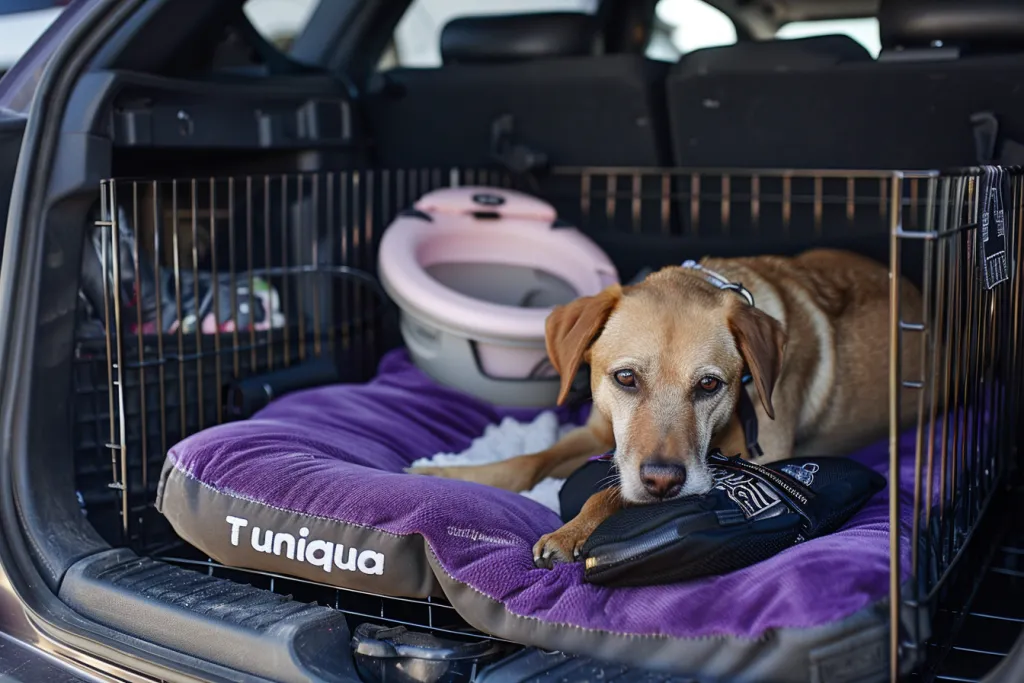
Safety is a paramount concern when it comes to housing our pets. This section highlights essential safety features, including secure locks, smooth edges, and materials free from harmful chemicals. We’ll also discuss the importance of ventilation for your dog’s health and comfort, emphasizing the need for a crate that promotes good air circulation without compromising security.
Additionally, we’ll cover the significance of a crate’s structural integrity. A crate should be sturdy enough to withstand your dog’s weight and movement without collapsing or tipping over. By focusing on these safety aspects, you can ensure your large dog’s crate is a secure haven.
Ease of cleaning and maintenance
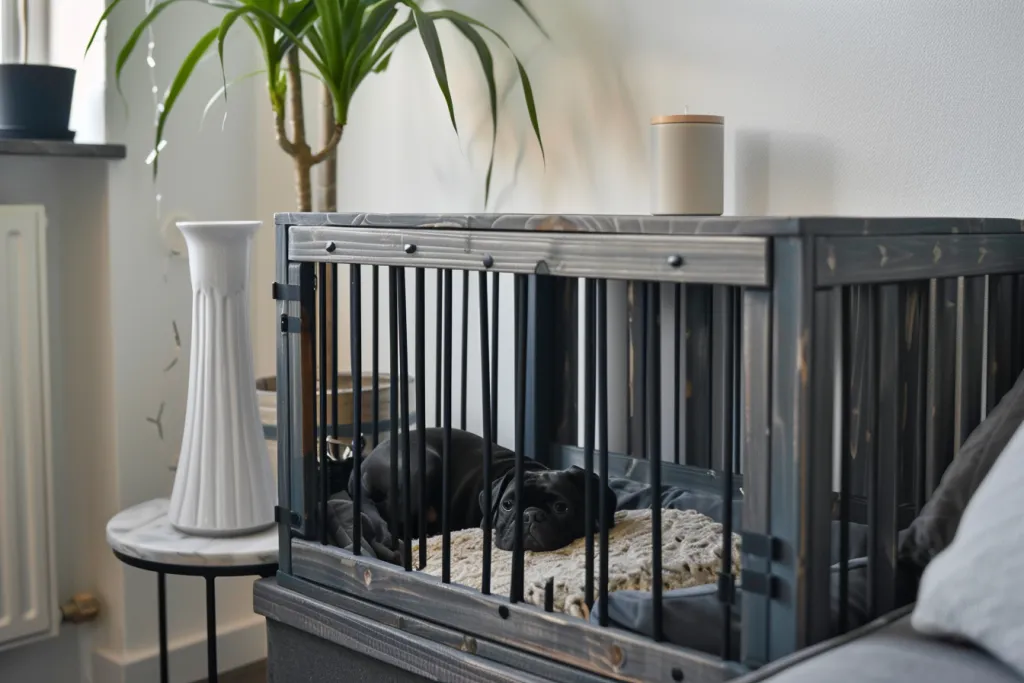
For pet owners, the ease of cleaning and maintaining a dog crate is a crucial factor. This section delves into the features that facilitate cleanliness, such as removable trays and washable materials. We’ll explain how these features not only make your life easier but also contribute to a hygienic environment for your pet.
Moreover, we’ll offer tips on regular maintenance routines that can extend the life of your dog’s crate and ensure it remains a healthy, comfortable space. From choosing materials that resist rust and corrosion to understanding how to properly disinfect a crate, this guide will equip you with the knowledge to keep your dog’s crate in top condition.
The role of portability and assembly
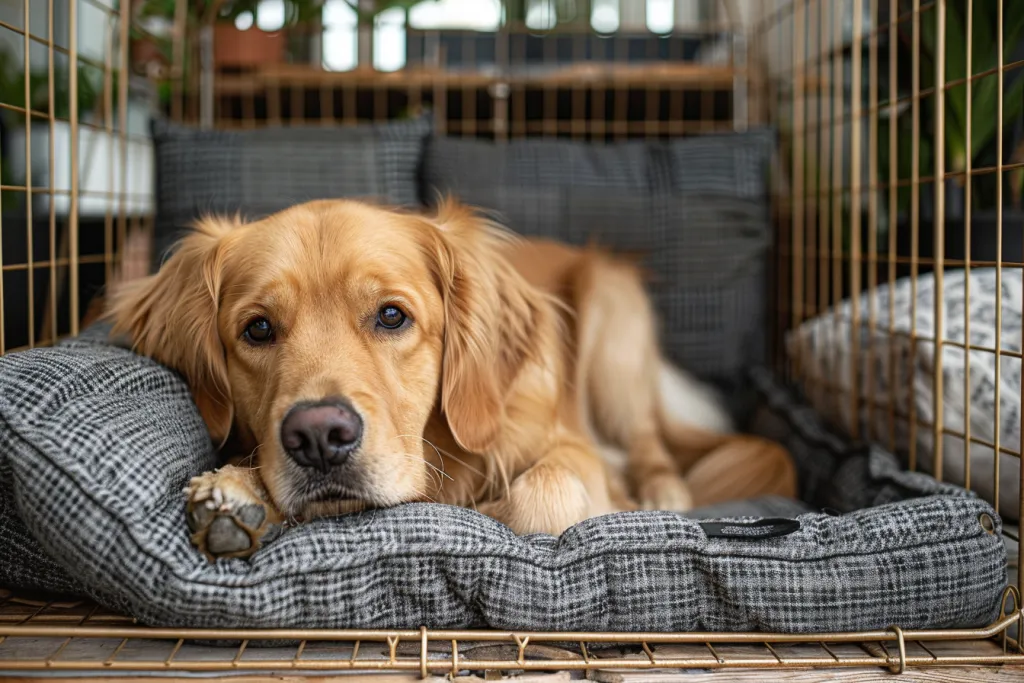
For many dog owners, a crate must be easily movable and simple to assemble or disassemble. This section explores the latest in crate design innovations, focusing on models that offer lightweight yet durable construction. We’ll discuss the benefits of collapsible crates for those who travel frequently with their pets and how to assess a crate’s portability features.
Additionally, the ease of assembly is a significant consideration, especially for those who are not mechanically inclined. We’ll provide insights into what to look for in a crate’s design to ensure that setting it up is a hassle-free process, enhancing the overall user experience for pet owners.
Conclusion:
Choosing the right dog crate for a large dog involves careful consideration of size, material, safety, maintenance, and portability. By understanding these key areas, you can select a crate that ensures your pet’s comfort, security, and health. Remember, a dog crate is more than just a containment tool; it’s a space where your pet should feel safe and at home.




